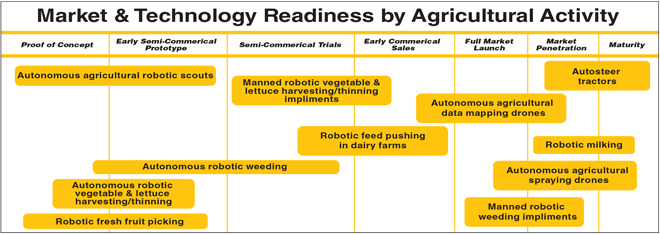The rollout of the Case IH and New Holland autonomous, or driverless, tractors at the Farm Progress Show in August sparked a whole range of reactions, from spirited conversations and conjecture, to skepticism and indifference. If nothing else, it gave ag people something to talk about besides the challenging times the industry is facing.
But there is more to it than someone hyping some innovative technology.
From the complexities and potential of big data to new and novel uses for drones, or unmanned aerial vehicles, the introduction of autonomous vehicles are another signpost that farming is being reconfigured in a profound way.
For some, all of this change is overwhelming. And sooner or later, each of us in agriculture — farmers, equipment dealers and manufacturers — will need to decide for ourselves if we want or will be able to deal with the ongoing transition. For dealers, sooner than later should be the goal for 2017. It’s coming faster than you may think.
You need to decide if you’re entirely in and ready to fully participate, or if you’re up to handling only part of the big data-precision farming trend or none of it. Remember, if you sell it, you’re going to need to service it. Only you can answer how far you want to go in supporting customers who are looking for the full benefit promised from acquiring cutting-edge equipment and enormous piles of data.
The first step is to define big data and precision farming. A recent report from North Dakota State University’s agribusiness and applied economics department (What is Big Data in the Context of Agriculture?), differentiates big data and precision ag, which is often confused.
The report defines big data as “high volume, high velocity and high variety information assets that demand cost effective and innovative forms of information processing for enhanced insight and decision making.” Some experts also include analytics and veracity as key parts of putting big data to effective use.
On the other hand, the National Research Council refers to precision farming as a “management strategy that uses information technologies to bring data from multiple sources to bear on decisions associated with crop production.”
The report goes on to say that, because precision farming provides an input for big data analytics, “we could consider precision agriculture and big data complementary to each other … The ability to effectively manage and use the massive data sets associated with big data is a huge challenge. The analytics needed to combine data and use algorithms necessary to gain insights will require specialized expertise.”
It’s already evident that UAVs will play a big part in the full move toward precision farming. The Assn. of Unmanned Vehicle Systems International estimates that about 160,000 drones will be in use in the U.S. by 2025. “Some predict that the ag sector will be one of the biggest benefactors.”
Some also say that agriculture could be automated before other industries. “The new age of farm machines include weeding robots, self-driving tractors and crop-spraying drones,” says Khasha Ghaffarzadeh, lead author of a new report about ag automation. “Productivity [in ag] has dramatically increased and we see robots as the next step in enabling that,” he says. (See chart below to see how IDTechEx sees ag automation evolve.)
It’s coming on fast!
For perspective on the precision side of it, plan to attend the Precision Farming Dealer Summit, January 9-10, 2017 at the Hilton St. Louis at the Ballpark.

According to the report “Agricultural Robots and Drones 2016-2026: Technologies, Markets and Players,” released by IDTechEx, the ag industry could be automated before other industries. This schematic shows the readiness levels of different agriculture robots and drones. While some technologies like auto-steer and unmanned spraying helicopters are technologically mature, others like robotic fruit harvesting are in the early stages of development. Source: IDTechEx






